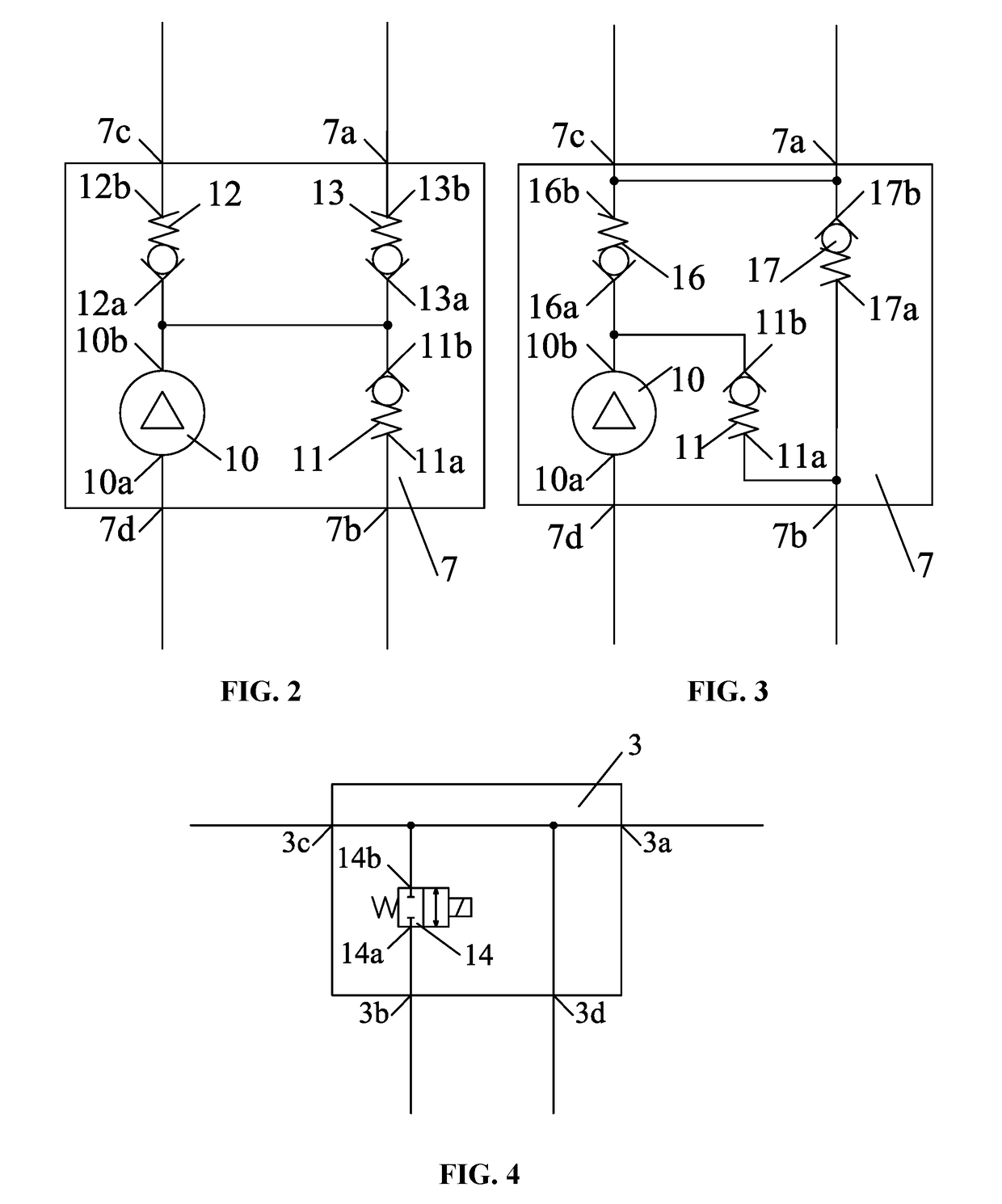Modularized multifunctional variable valve actuation system for use in 6-cylinder internal combustion engine
a multi-functional, variable technology, applied in the direction of valve arrangements, machines/engines, non-mechanical valves, etc., can solve the problems of increasing the loss of properties and people's lives due to traffic accidents, consuming a large amount of gasoline, and affecting the sustainable development of the economy, so as to improve the acceptance of the market, simplify the electromagnetic valve structure, and reduce the effect of system cos
- Summary
- Abstract
- Description
- Claims
- Application Information
AI Technical Summary
Benefits of technology
Problems solved by technology
Method used
Image
Examples
Embodiment Construction
[0105]FIG. 1 shows a diagram of a modularized multifunctional variable valve actuation system for a six-cylinder internal combustion engine. This system mainly comprises the valve actuation module 1, the first oil supply module 6, the second oil supply module 5, oil delivery module 7, oil tank 8, oil drain valve 9 and oil pipe; besides, it also comprises the phase limit module 2, mode selection module 22, the first control module 3, the second control module 4; The first oil supply module 6 and the second oil supply module 5 are cam-plunger oil supply modules with the camshaft angle with the phase difference of 180° and its rotation period is double of the ignition interval angle of the internal combustion engine, i.e. 240° crank angle. The first control module 3 comprises the first oil supply port 3a, the oil drain port 3b, the 1 drive port 3c and the oil delivery port 3d of the first control module. The second control module 4 comprises the first oil supply port 4a, the oil drain ...
PUM
 Login to View More
Login to View More Abstract
Description
Claims
Application Information
 Login to View More
Login to View More - R&D
- Intellectual Property
- Life Sciences
- Materials
- Tech Scout
- Unparalleled Data Quality
- Higher Quality Content
- 60% Fewer Hallucinations
Browse by: Latest US Patents, China's latest patents, Technical Efficacy Thesaurus, Application Domain, Technology Topic, Popular Technical Reports.
© 2025 PatSnap. All rights reserved.Legal|Privacy policy|Modern Slavery Act Transparency Statement|Sitemap|About US| Contact US: help@patsnap.com



